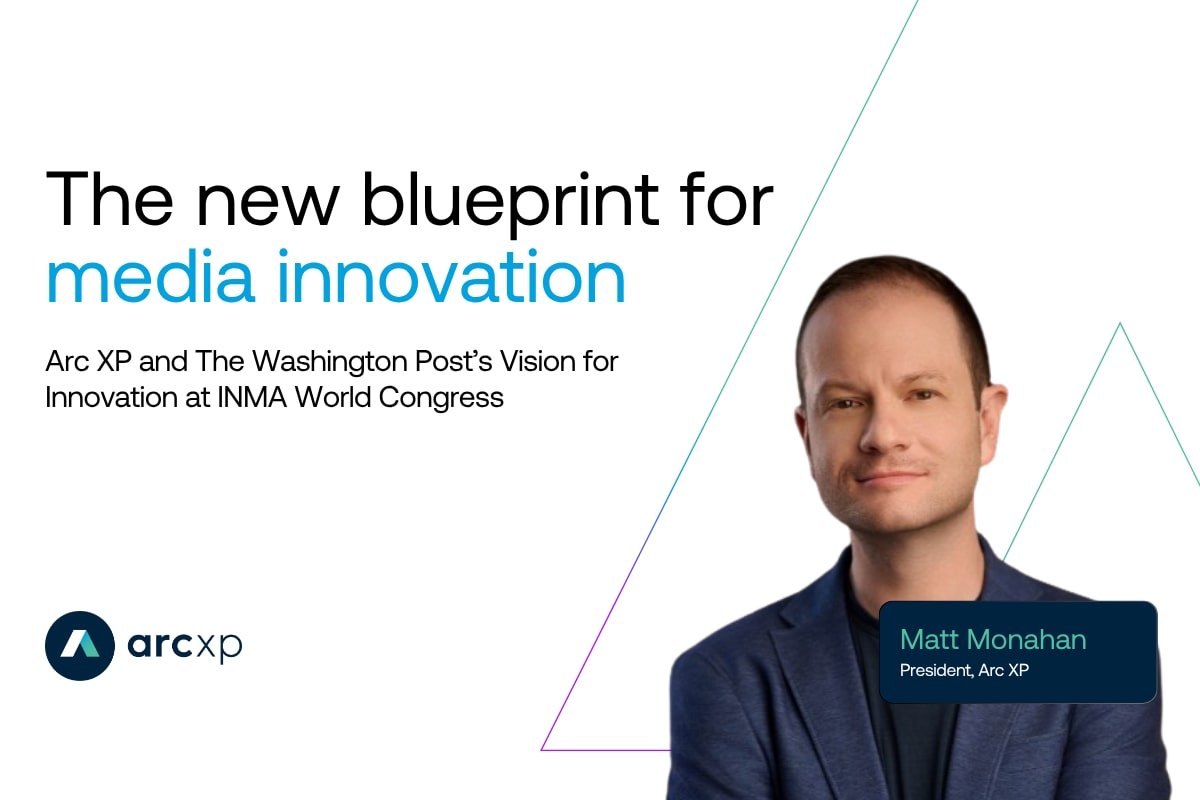An announcement from Arc XP President Matthew Monahan on our relationship with The Washington Post
In 2014, I was leading a small team at The Washington Post that believed better tools would make publishing faster, smarter, and more scalable for modern media businesses. That idea turned into Arc XP, and quickly grew into a platform used by thousands of the most important media and content brands in the world.
The challenges facing media then were just as intense as today (disruptive tech, changing business models), and Arc XP took a clear point of view on how to help move the industry forward. While we were close to the day-to-day needs of a major newsroom, we focused on the bigger picture: building an extensible platform to serve the business needs of media companies navigating constant reinvention. What gave us the edge was a killer team and proximity to the problem.
For many of us who were there, the setting today feels pretty familiar. The pace of change is blistering but now driven by entirely new technologies and patterns — LLMs, agents, 1P data and new revenue models—that are reshaping the kinds of problems we can solve in exciting ways. And once again, we see an opportunity to take a clear stance and shape that future through Arc XP.
To meet the moment, we’re going to recapture the energy and partnership of those early days and forge a closer relationship between Arc XP and The Washington Post once again. Beginning today, Arc XP is now operating within the newly created Office of the CTO at The Washington Post. This structure is just the enabler—the goal is a more direct, consistent way to collaborate, test ideas quickly, and translate those insights into real product improvements for our customers.
These aren’t abstract challenges for us. The Post is our owner, but also our customer. Our team goes to work feeling the urgency of the moment in a way most technology providers can’t. We have skin in the game. In this new structure we’ll use the learnings from The Washington Post to enhance usability, automation, and innovation across the board. We’re solving the same problems our customers are, and we know what’s at stake if we don’t get it right.
But the Post is only one part of the equation. Our product is shaped by the insight, feedback, and creativity of all our customers—across verticals, geographies, and use cases. Our customers helped us grow to where we are today, and that broad focus and commitment to solve our customers’ challenges will not change.
Arc XP remains an independent business unit. We’re growing fast, and we’re committed to the roadmap: personalization, newsroom efficiency, ethical AI, extensibility and revenue growth. This renewed collaboration inside The Post only strengthens Arc XP’s ability to deliver on our forward vision.
So if you’ve sensed excitement from our team lately, that’s why. We see an opportunity to lead again—to take all we’ve learned over the past decade, combine it with what we’re learning now, and help move this industry forward in a meaningful way.
Thanks, as always, for being on the journey with us. We don’t take your trust for granted, and we’re excited for what comes next.
Matthew Monahan
President, Arc XP
Recent resources





